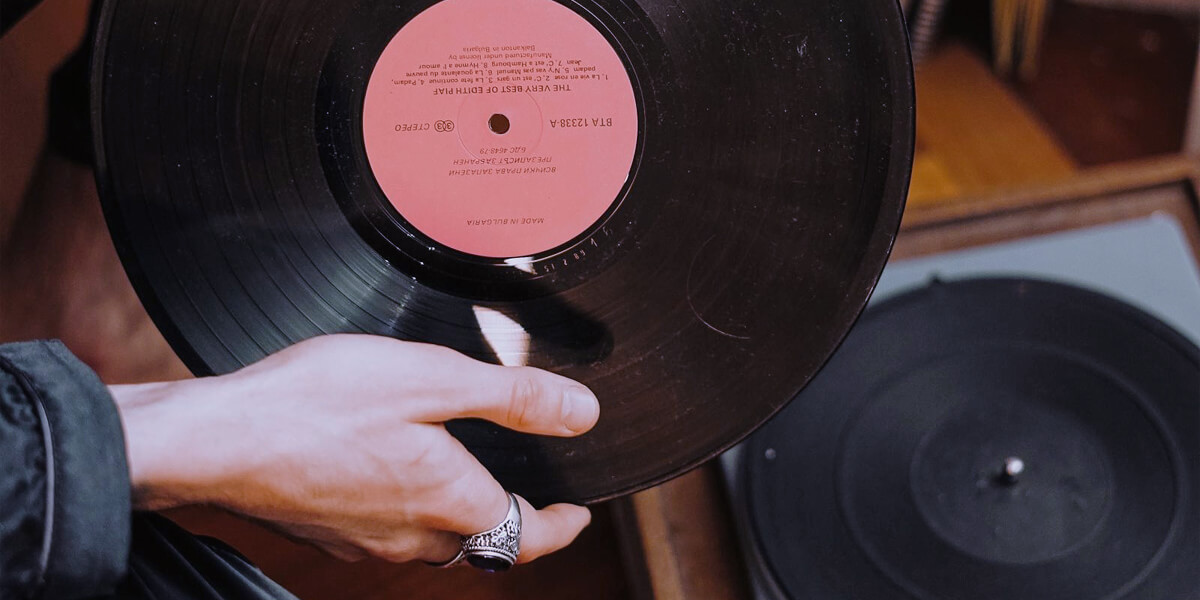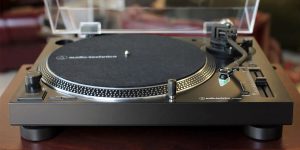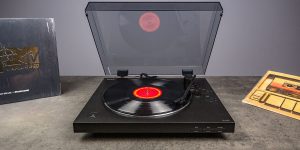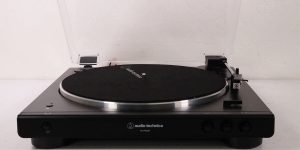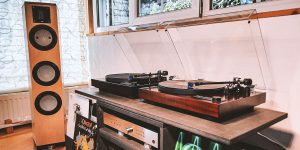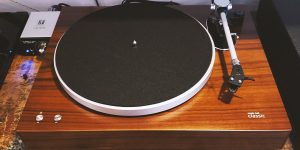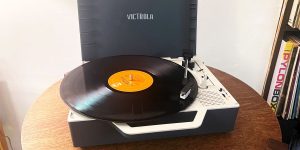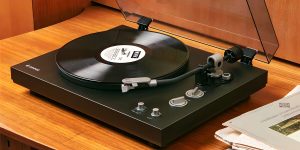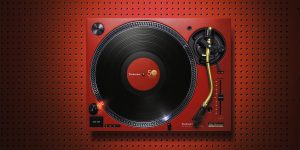The rotation speed is an essential characteristic of turntables that sets the stage for listening to vinyl records. As the turntable’s platter spins, the record player speeds dictate the tempo at which the music unfolds, influencing the sound quality, playback duration, and compatibility with different record formats.
Join me on a virtual journey to explore the significance and nuances of the turntable’s speed, uncovering how it breathes life into the cherished melodies etched into vinyl grooves.
What is RPM, and why does it matter?
RPM stands for “revolutions per minute.” It is a unit of measurement used to quantify the rotational speed or frequency of a rotating object, such as a turntable’s platter, in the context of vinyl record players.
In the context of turntables and vinyl records, RPM refers to the speed at which the platter rotates while playing a record. Different types of records are designed to be played at specific RPMs.
The three main turntable speeds
One essential aspect of turntables is their ability to play records at different speeds, ensuring accurate playback of various types of vinyl. The main 3 turntable speeds are carefully designed to match specific record types, preserving the intended pitch and sound quality.
33⅓ RPM (long play or LP records)

The 33 1/3 RPM speed is a fundamental component of turntable operation, specifically designed for playing LP (Long Play) records. LP records are typically 12 inches in diameter and made of vinyl. This speed is perfectly suited for LPs, which can hold multiple tracks per side and offer an extended playing time.
LP records are characterized by their smaller grooves, which are carved into the vinyl surface. By reducing the vinyl record’s size of the grooves, more music can be squeezed onto each side of the record without sacrificing audio fidelity. This innovation revolutionized the music industry, as artists and bands could present a cohesive collection of songs on a single LP record.
The introduction of LP records and the adoption of the 33 1/3 RPM speed quickly made it the standard album format. This shift allowed artists to showcase their creative vision and present a complete musical experience rather than releasing individual songs or shorter compilations. The longer playing time afforded by LP records and their ability to maintain excellent sound quality promoted the popularity of full-length albums and further enriched the listener’s engagement with the music.
45 RPM (singles or extended play records)
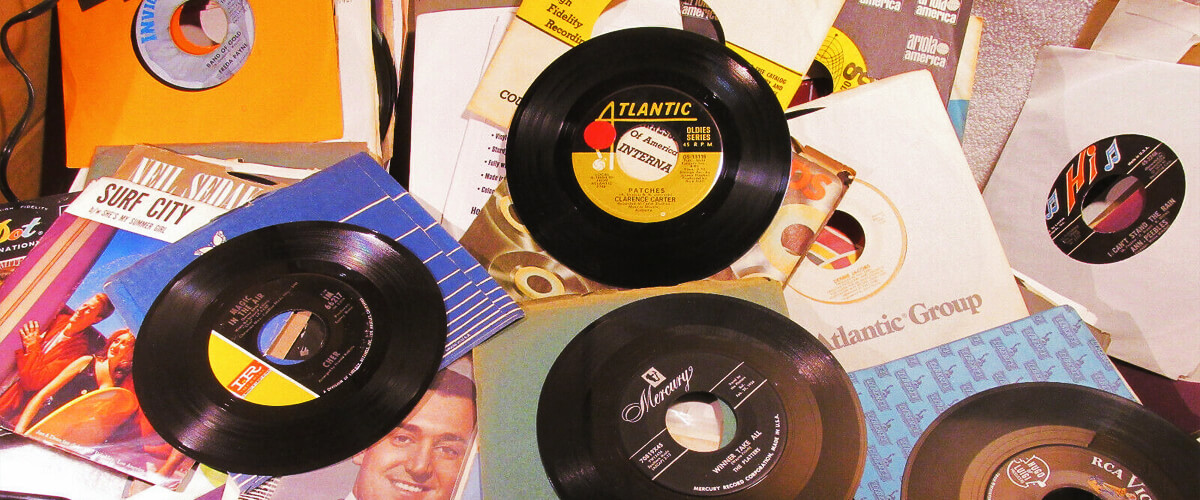
This speed is designed for playing singles or EP (Extended Play) records. These records are typically 7 inches in diameter and made of vinyl, distinguishing them from LP records.
45 RPM records are characterized by larger grooves, which help maintain audio fidelity in a more compact format. They are made for shorter playing sets, typically containing one or two tracks per side. This format allows artists and record labels to release individual songs.
Artists and record labels could now focus on specific tracks, effectively using 45 RPM singles as a medium for hit songs or standout releases. This format provided a more accessible option for music lovers to purchase and enjoy their favorite tunes.
Additionally, this RPM recording became the preferred format for jukeboxes, used in bars, diners, and public spaces. The ability to easily switch between tracks made 45 RPM singles ideal for these automatic music machines.
78 RPM (shellac records)
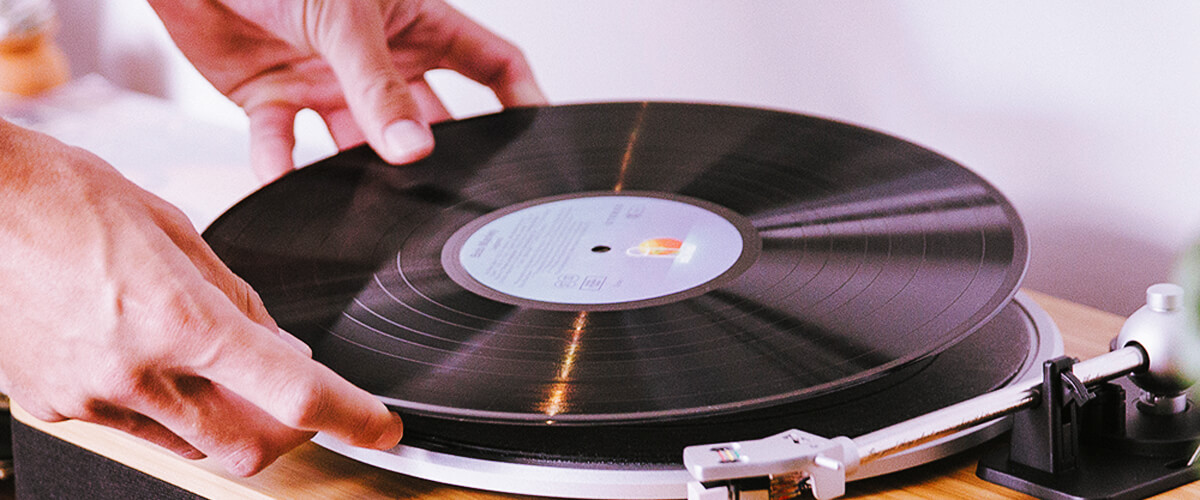
It was used for shellac records, which played a significant role in the early days of recorded music. They were made of shellac, unlike the vinyl used in later formats.
78 RPM records had a limited playing time of around 3 to 5 minutes per side. This shorter duration was due to the wider grooves to accommodate the groove spacing for the playback speed. The wider grooves, however, had a trade-off in sound quality, as they allowed for more surface noise and potential distortion.
Historically, 78 RPM records were the dominant format for commercial music recordings until the mid-20th century. They were widely used during the era of big bands, jazz, and early rock and roll. However, with technological advancements and the introduction of vinyl LPs and 45 RPM singles, popularity gradually declined.
78 RPM records are valued for their historical significance, capturing performances and musical styles of a bygone era. Collectors often seek out rare and well-preserved 78 RPM records to experience the music as it was initially intended.
How speed affects sound quality?
It is important to play vinyl records at the correct speed to ensure accurate music reproduction. The wrong speed can lead to pitch variations, distortion, and overall sound quality degradation. For example, playing a record at a higher speed than intended will make the music sound faster and higher in pitch, while playing it at a slower will make the sound slower and lower in pitch.
The correct RPM setting ensures that the stylus follows the grooves at the proper speed, allowing for accurate tracking of the audio information and faithful reproduction of the original recording. Many modern turntables have selectable speed settings that allow you to switch between 33 1/3 RPM and 45 RPM to accommodate different types of records.

